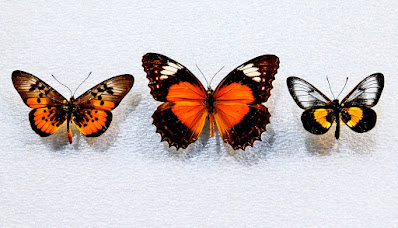‘WHACK-A-MOLE’ SHOWS EVOLUTION DOESN’T GO FOR PERFECTION
Development, it appears, isn't very proficient at multitasking, inning accordance with new research that involved intentionally messing with its fragile equipment.
"I'm captivated with life, and that is why I want to damage it," says coauthor Betül Kaçar, an aide teacher at the College of Arizona's divisions of molecular and mobile biology and of astronomy, as well as at the Lunar and Worldly Lab, in explaining her research.
What may sound callous is a genuine clinical approach in astrobiology.
bola populer perbandingan bakayoko dan matic
"I GUESS I TEND TO MESS WITH THINGS I'M NOT SUPPOSED TO. LOCKED IN TIME? LET'S UNLOCK IT. BREAKING IT WOULD LEAD THE CELL TO DESTRUCTION? LET'S BREAK IT."
Known as genealogical sequencing, the idea is to "resurrect" hereditary sequences from the dawn of life, put them to operate in the mobile paths of modern microbes—think Jurassic Park but with vanished genetics instead of dinosaurs, and study how the organism copes.
Kaçar uses genealogical sequencing to find out what makes life tick and how microorganisms are shaped by transformative choice stress. The understandings gained may, in transform, offer hints as to what it considers natural forerunner particles to trigger life—be it on Planet or distant globes.
In her laboratory, Kaçar focuses on designing particles that imitate tiny invisible wrenches, creating chaos with the fragile mobile equipment that allows microorganisms to consume, move, and multiply—in brief, to live.
EVOLUTION AND ‘TRANSLATION MACHINERY'
Kaçar has concentrated her attention on the translation equipment, a labyrinthine molecular clockwork that equates the information encoded in the bacteria's DNA right into healthy proteins. All organisms—from microorganisms to algae to trees to humans—possess this item of equipment in their cells.
"We approximate everything about the previous based upon what we have today," Kaçar says. "All life needs a coding system—something that takes information and transforms it right into particles that can perform tasks—and the translational equipment does simply that. It produces life's alphabet. That is why we think about it as a fossil that has stayed mostly the same, at the very least at its core. If we ever before find life somewhere else, you wager that the first point we will appearance at is its information processing systems, and the translational equipment is simply that."
So critical is the translational equipment to life on Planet that also throughout greater than 3.5 billion years of development, its components have gone through little considerable change. Researchers have described it as "an transformative mishap icy in time."
"WE GET INTO THE HEART OF THE HEART OF WHAT WE THINK IS ONE OF THE EARLIEST MACHINERIES OF LIFE."
"I guess I have the tendency to mess with points I'm not supposed to," Kaçar says. "Secured time? Let's open it. Breaking it would certainly lead the cell to destruction? Let's damage it."
The scientists took 6 various stress of Escherichia coli germs and genetically crafted the cells with mutated elements of their translational equipment. They targeted the step that feeds the unit with hereditary information by switching the shuttle bus healthy protein with transformative relatives drawn from various other microorganisms, consisting of a rebuilded forefather from about 700 million years back.


